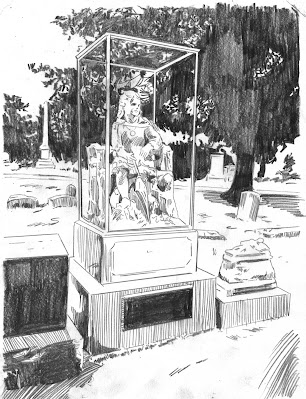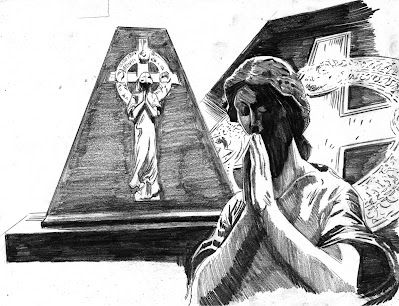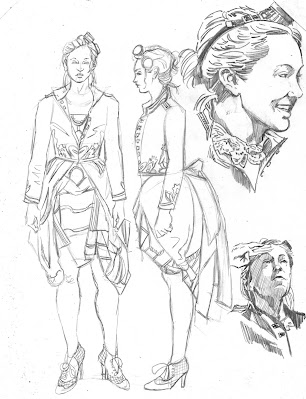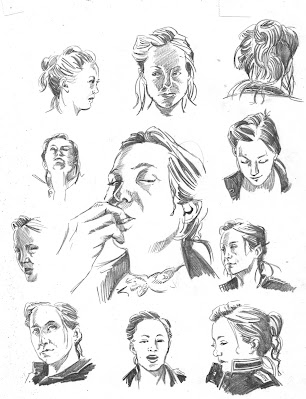One of the fun things about creating Visitations is designing the characters and settings. Some are inspired by real life people and places while others are new creations. The following are both familiar characters as well as some that will be seen in future issues of Visitations.
From Chicago's Graceland Cemetery are three monuments that have appeared in Visitations
This monument was the inspiration for a new character that will be seen in Visitations 7
which will be out in 2022
Inez Clark, the infamous haunted statue that inspired the
Piper Boy's sister in Visitations issue 3
One of the background monuments that was seen in Visitations issue 1
Character Studies of Nellie McCullough, based on
Visitations new character Madison Wyman who's first appearance
will be in Visitations 7. This character is based on a
cosplayer who
came to a comic convention costumed as Nellie McCullough.
A new character named Autumn Eyak, who will be featured
in a modern day story in the upcoming Visitations Extra issue 1.
Autumn is a mysterious woman who does live stream tarot
card readings. In addition to her tale, Visitations Extra issue
one will feature 2 stories unrelated to the Visitations universe. Stay
tuned for more details.






















































